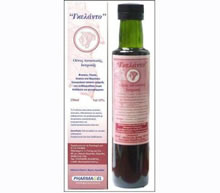
Dictionary of Allergies .. Natural color additives
Natural color additives
A critical evaluation of the available information demonstrates that reactions to natural color additives are rare. Studies of turmeric and carotenoid pigments administered in mixtures with other food colorings failed to definitely identify reactions to either color additive. For carotenoids, the one case report of an adverse reaction was not conclusive. An anaphylactic reaction to saffron does suggest an IgE-mediated reaction, but the high use of saffron as compared with this single report of an adverse reaction suggests that sensitivity to saffron is extremely rare. Numerous reports of reactions to grapes or grape products have been reported in the literature, but no reports of sensitivities to grape skin extract or grape color extract were found.
In rare cases, annatto dye may provoke a severe, adverse reaction in individuals with an uncommon hypersensitivity, and may aggravate the symptoms of patients suffering from recurrent urticaria. In its long history of use, there has been only one reported case of anaphylaxis resulting from the ingestion of annatto. Studies designed to investigate the role of annatto in recurrent urticaria sufferers were limited due to the absence of double-blind challenge and placebo controls.
A number of cases of adverse reactions to carmine following ingestion have been reported in the literature[1]. These adverse reactions suggest an IgE-mediated hypersensitivity. In many of the reported cases, the cause of sensitization to carmine was topical exposure from the use of carmine-containing cosmetics or occupational exposure to carmine and not from ingestion of carmine-containing foods and beverages. Following sensitization, affected individuals would be sensitive to carmine and the amounts present in foods and beverages could elicit allergic reactions. It is not known whether all individuals with carmine sensitivity induced through topical use are sensitive to the ingestion of carmine in foods.
Carmine is an example of an allergen that can act through both inhalation and digestion, giving rise to an allergolical syndrome that can show itself clinically with expressions of both respiratory allergy and alimentary allergy[2]. Despite their widespread use in food products, few reports of allergic reactions following ingestion have been reported for the majority of natural color additives. It is concluded that the ingestion of natural color additives presents a very low risk of provoking adverse reactions.
References
1. Lucas CD, Hallagan JB, Taylor SL. The role of natural color additives in food allergy. Adv Food Nutr Res. 2001;43:195-216.
2. Tabar AI, Acero S, Arregui C, Urdánoz M, Quirce S. Asthma and allergy due to carmine dye. An Sist Sanit Navar. 2003;26 Suppl 2:65-73.
Γκέλης Ν.Δ. - Λεξικό Αλλεργίας - Εκδόσεις ΒΕΛΛΕΡOΦΟΝΤΗΣ - Κόρινθος 2013
Gelis Ν.D. - Dictionary of Allergies - VELLEROFONTIS Publications - Corinth 2013




